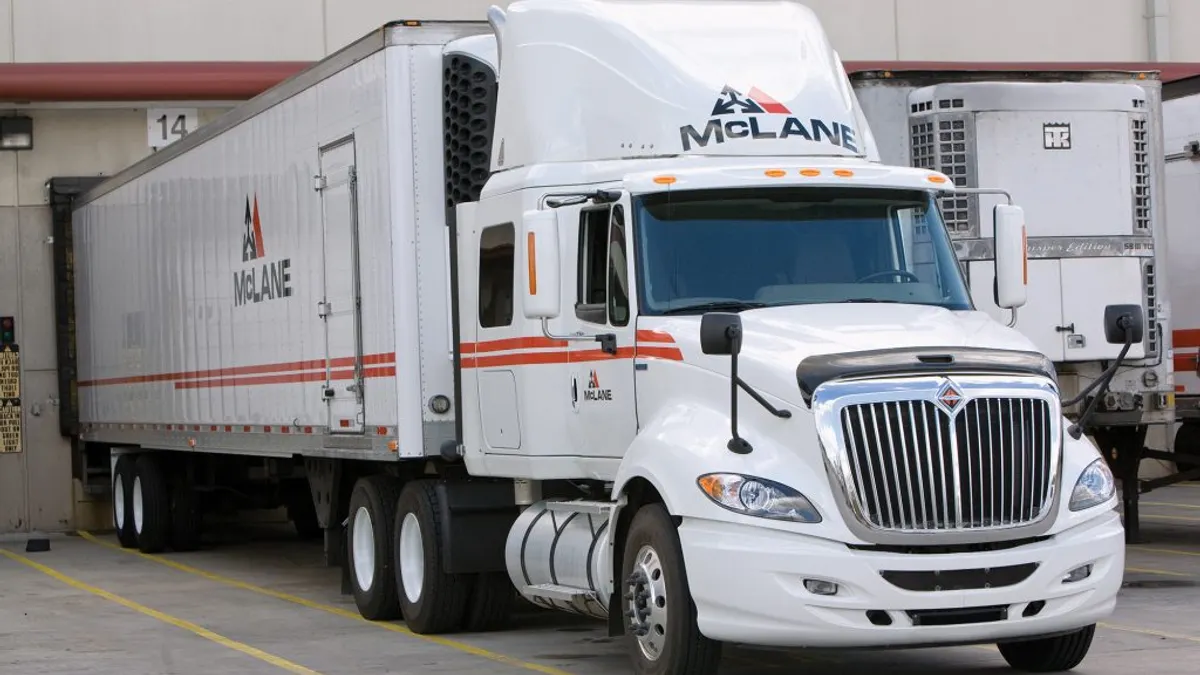“If you need paper towels in four minutes … we’re not your guys,” said eBay CEO Devin Wenig from the stage of the e-commerce marketplace’s annual seller conference July 24.
To a room full of eBay sellers, the CEO emphasized what the company’s new fulfillment program, deemed “managed delivery,” is not.
“We don’t want to win a fast shipping game — that’s not the point. You’re not going to hear one-hour delivery, five-minute delivery,” said Wenig, explaining that eBay’s delivery speeds will be around three days with the goal of getting down to two.
EBay's foray into order fulfillment will be run by third-party partners through eBay technology — a move that followed a similar announcement from e-commerce platform Shopify just one month earlier.
Wenig’s caveats about speed were clearly aimed at Amazon, which launched Fulfillment by Amazon (FBA) in 2006 and recently announced the transition of Amazon Prime's standard shipping time from two days to one.
Amazon and eBay are the number one and two customers of USPS and by some accounts, Shopify is headed into the third-place slot. But despite the potential shipping volume, eBay’s CEO implied it is unlikely his fulfillment program will be able to compete with FBA on speed or price.
What's in it for shippers?
So why would sellers choose eBay or Shopify when their prices and shipping speeds likely can't match FBA?
From where most shippers sit, two to three days shipping time would actually be an improvement, according to a recent survey from BigCommerce. Out of 800 global merchant respondents, just 6% currently offer free two-day shipping, and only another 4% plan to do so this year. And according to Gartner's Tom Enright, four business days of delivery time is standard for most retailers.
Furthermore, BigCommerce cited several reasons respondents did not want to work with Amazon, including negative brand alignment, a lack of trust and a desire to own their data, among others.
Wenig described eBay’s service as an answer to repeated requests from eBay sellers who wanted the company to handle more of their e-commerce activities.
Offense or defense?
Though it may be tempting to see these efforts by Shopify and eBay, and those that come from retail stakeholders in the future, as attempts to cash in on seemingly unending e-commerce volume, the move into fulfillment may be more defensive than offensive, according to Adam Blankenship, chief commercial officer for BlueGrace Logistics. In other words, the first priority may be boosting seller retention — especially for high-volume sellers — rather than recruiting new users.
The movement of e-commerce stakeholders (even those without a physical supply chain of their own) into the fulfillment service has several advantages. There may be value in the data a fulfillment program can generate, as eBay and Shopify get a better view of their sellers’ activities. EBay and Shopify already have built-in customer bases for their new fulfillment services, making the platforms competitive in a universe with a wide range of fulfillment services beyond FBA.
The programs may also enhance the quality of shipper and consumer experiences. “[E-commerce players] recognize that in a lot of cases, freight is the most expensive part of their product, so what could differentiate them is managing the costs of their freight but probably more importantly, managing the predictability, reliability and service experience of the transportation process,” said Blankenship. Within its immediate competitive set of point-of-sale software providers, Shopify is the first player to offer fulfillment services.
But for companies without physical assets like warehouses, trucks, vans or aircraft, adding fulfillment services is a big undertaking. Neither eBay nor Shopify has announced investments in vehicles or warehouses. They'll run on partnerships and sub-contracted services — a clear difference between these and FBA, not to mention UPS and FedEx's growing fulfillment platforms.
Amazon wields its ever-growing arsenal of vehicles, explained Blankenship, to not only set its own price for freight but to put a thumb on the broader market.
“With Amazon you have this huge trailer pool that they can control, and at least at some level, either push capacity in or pull capacity out of the market,” said Blankenship, who counts Amazon as a client. EBay and Shopify will likely enter the small parcel market, albeit with bulk volumes, but both will need a big response from sellers to have enough volume to negotiate significant carrier discounts.
“I don’t see how they’re going to aggregate enough business to really mode shift all of that effectively, or to just buy down the rates effectively outside of the parcel, small package,” said Blankenship, adding: “It doesn’t feel disruptive to me.”
The power of the brand
Another element Wenig mentioned from the stage at the eBay seller conference was brand awareness that could come from eBay branded boxes — another place where Amazon has made its mark.
“Our business is hidden in plain sight. People don’t realize that 15% of the U.S. post office volumes are marketplace transactions. But if our packages started showing up perhaps they would and that’s good for our brand and that’s good for your sales,” Wenig told the sellers conference to cheers from the crowd.
Both of these offerings are in very early stage — Shopify's fulfillment network is accepting applications and eBay’s service will launch in 2020, so some shift may yet occur before either program scales.
Still, Blankenship said more such programs are likely to pop up as transportation cost management becomes more central to e-commerce success.
Shopify will report its quarterly earnings Thursday, wherein it may share more about this new endeavor.
This story was first published in our weekly newsletter, Supply Chain Dive: Operations. Sign up here.





















